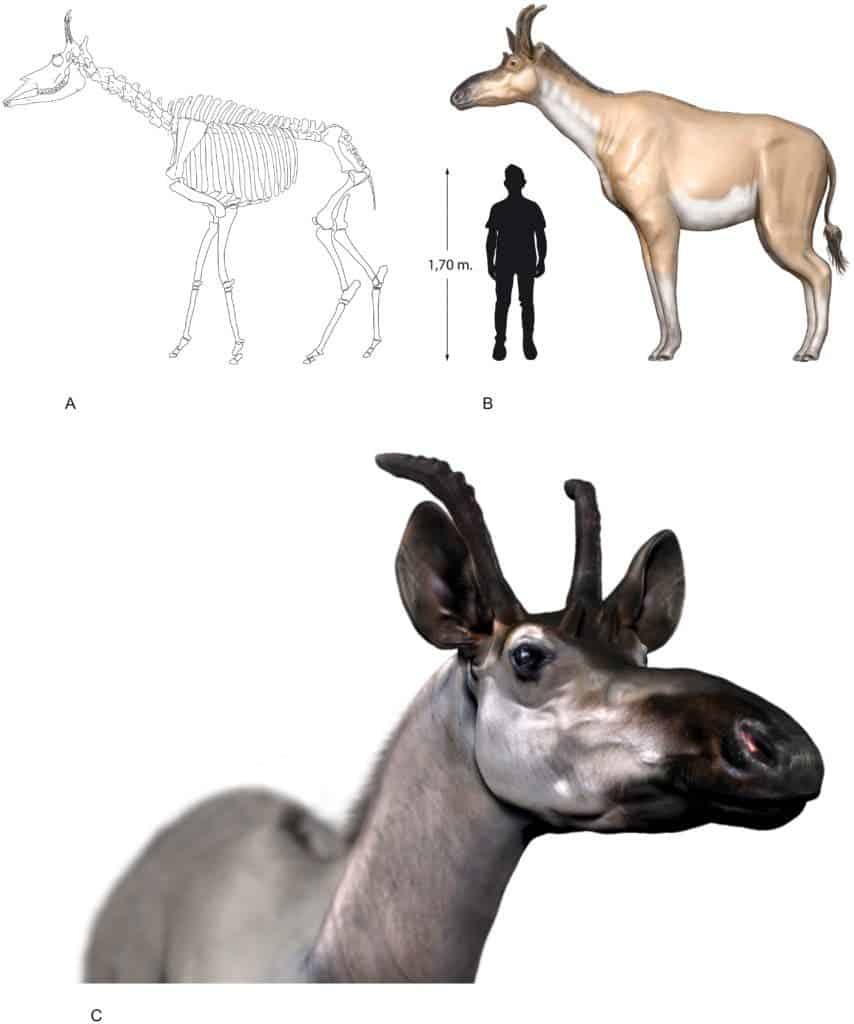A new, extinct large giraffid genus has been described by Spanish researchers, offering a new glimpse into the evolutionary path of the long-necked herbivores.

Skeletal sketch, size comparison to modern human, and artist’s reconstruction of the newly described genus.
Modern giraffes (Giraffa camelopardalis) stand out instantly, with their tall necks and bony osccicones — the horn-like protuberances on the giraffe’s head. By virtue of this alone, you could think they’ve had a completely different evolutionary path than other animals, but that’s not true. They’re part of a larger family of ruminants known as Giraffidae and their closest living relative is the okapi (Okapia johnstoni), which is a pretty regular looking animal.
However, knowing its family ties today doesn’t mean we know how the giraffe came to be. Researchers think that Giraffidae have been around since the Miocene epoch, with over 30 extinct species found and described up to now. A lack of fossilized skulls, the paper notes, has impeded biologists from establishing the evolutionary relationships between them.
Getting ahead
The new genus, named Decennatherium rex sp. nov., could help bridge some of those gaps in our understanding. It was described by a team led by María Ríos from the National Museum of Natural History, Spain from a fossilized skeleton that is “unusually” complete. Although not yet dated, stratigraphic position suggests the fossil originates sometime in the late Miocene.
The team performed a full phylogenetic analysis on Decennatherium and follow it up with the “the first phylogenetic reconstruction of the [Graffidae] group”. They report that the genus could represent the most basal branch (i.e. common ancestor) of a clade of now-extinct giraffid groups, and is likely the earliest-evolving example of the four osscicone layout seen today, with two over the eyes and two larger, ridged ones at the back of the head. This layout is shared by all species in the clade, lending weight to the hypothesis that Decennatherium is the extinct clade’s common ancestor or at least very close to it in evolutionary terms.
The clade includes Sivatheres, the largest known giraffid, and Samotheres, whose appearance was somewhere in between that of okapis and giraffes. Bryan Shorrocks, a professor in the Environment Department at the University of York, notes in his book The Giraffe: Biology, Ecology, Evolution and Behaviour that a subspecies of the latter, S. africanum, is a strong candidate as the ancestor of the modern giraffe.
The inclusion of the Decennatherium in the sivathere-samothere clade would extend its timespan back to the early Miocene and its range over the Iberian peninsula, the team notes, which would make it the most successful and long-lived clade among the giraffids.
The paper “Evolution and systematics of the late miocene spanish Giraffidae (Mammalia, Ruminantia, Pecora)” has been published on the scientific repository RODERIC.









